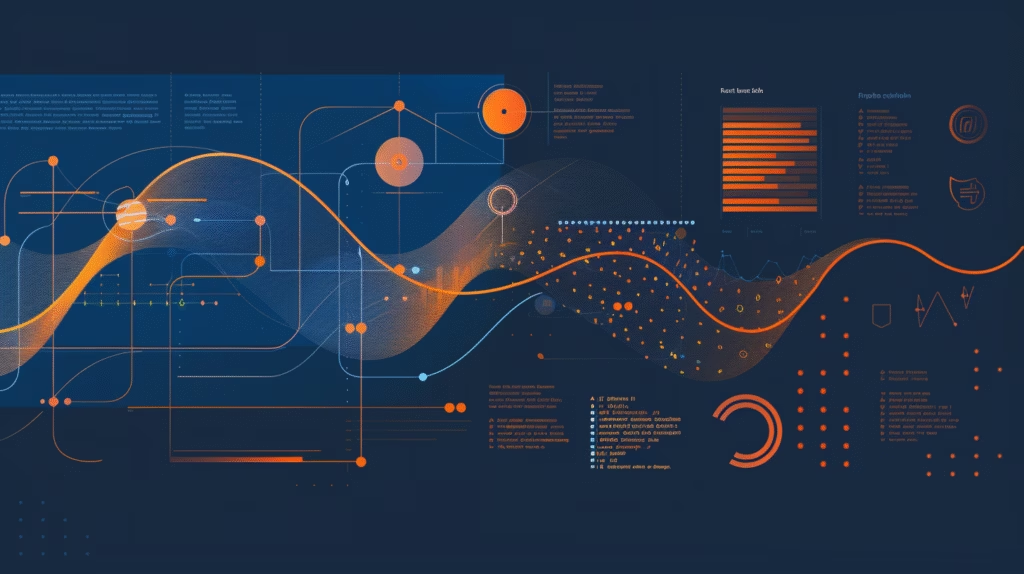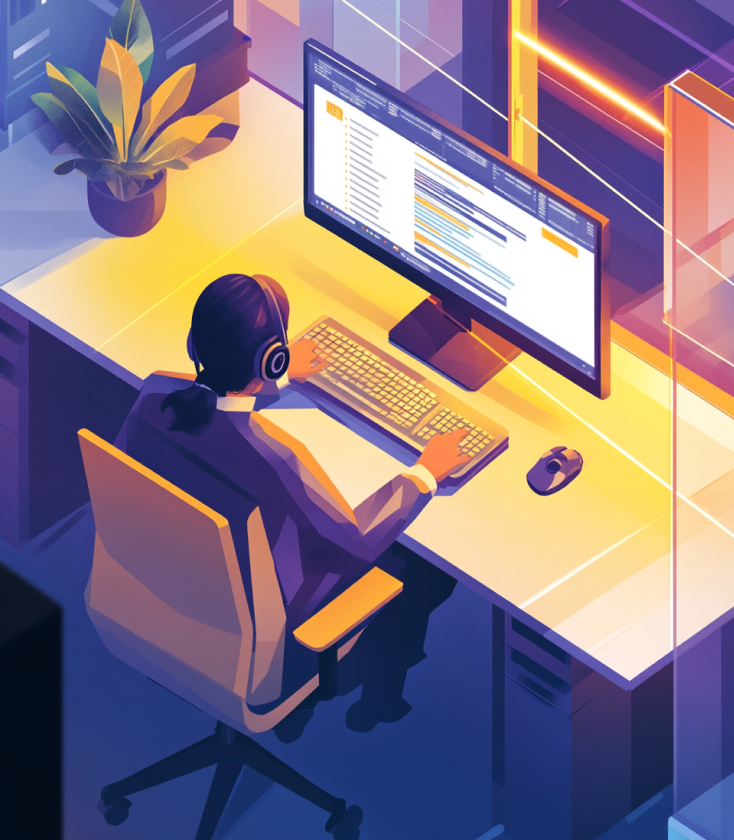Business Texting’s New Rulebook: What the Heck Is 10DLC and Why Should You Care?
Business texting seemed so simple once upon a time. Send a message, customer receives it, everyone’s happy. Those were the days before carriers decided that businesses sending texts needed official credentials, registration processes, and a framework with an awkward name like “10DLC.” Welcome to the modern era of business messaging, where even phone numbers need paperwork.
The Problem Nobody Asked For (But Everyone Gets)
Spam ruined everything. Shocking, right? Businesses discovered they could send thousands of promotional texts from regular phone numbers, customers got annoyed, carriers got flooded with complaints, and suddenly the entire messaging ecosystem needed adult supervision.
Enter 10DLC—or “10-Digit Long Code” for those who enjoy technical terminology—a framework designed to separate legitimate businesses from the digital equivalent of used car salesmen.
Before 10DLC became mandatory, companies were blasting out appointment reminders, marketing messages, and order updates using standard local phone numbers. Carriers watched this explosion of application-to-person (A2P) messaging and realized they had zero way to distinguish between “Your prescription is ready for pickup” and “CLICK HERE FOR FREE CRYPTO!!!!”
Both came from 10-digit numbers. Both looked identical to filtering systems. The result? Legitimate business messages started getting blocked alongside actual spam — a topic we’ve explored further in Calls Getting Flagged as Spam.
Breaking Down This Acronym Nightmare
10DLC refers to standard local phone numbers—the kind with area codes that look normal to customers—but with official carrier approval for business texting. Think of it as getting a business license, except for phone numbers. Instead of just grabbing any local number and firing away with marketing campaigns, businesses now register their “brand” and “campaigns” with a central database that major carriers use to verify legitimacy.
Registration involves providing legal business name, tax ID, physical address, website, and detailed descriptions of exactly what types of messages businesses plan to send. Each message type gets classified as a “campaign,” which requires sample messages and documentation proving customers actually consented to receive texts. Completing this bureaucratic obstacle course earns businesses the privilege of having their messages actually delivered. Funny how that works.
The Evolution Nobody Wanted
Historically, businesses had three main options for bulk messaging, each with its own special brand of headache.
Toll-free numbers work well for two-way SMS in moderate volumes. Short codes handle massive message volumes with impressive throughput but can’t take phone calls. Standard long codes were designed for personal texting, not marketing campaigns—so using them for A2P traffic violates CTIA Messaging Principles and Best Practices. That’s where 10DLC comes in to balance deliverability, compliance, and cost.
10DLC bridges the gap between these options. It provides higher volume capacity than regular long codes, costs substantially less than short codes, and maintains the familiar look of a local number. Businesses get the throughput they need without the astronomical pricing or compliance violations.
Registration: A Journey Through Hell
Getting 10DLC registration approved involves three main steps, each more thrilling than the last.
Brand registration comes first, followed by campaign registration, and finally number association linking the 10-digit number to verified information so it can legally send A2P traffic without risking blocks or throttling.
Approval timelines vary wildly. Some providers complete registration in 72 hours. Others take weeks, during which businesses sit around hoping their messages eventually get delivered.
Compliance: The Never-Ending Responsibility
Registration isn’t a one-and-done situation. Ongoing compliance requirements ensure businesses don’t immediately revert to spam behavior the moment they get approved.
Opt-in consent must be explicit. Customers need to actively agree to receive texts. Documentation of this consent must exist because carriers and regulators will ask for it.
Opt-out mechanisms must be clear and functional. Every message should include “Reply STOP to end,” and businesses must honor those requests immediately. Making it difficult to unsubscribe is both annoying and illegal, a combination that tends to attract FCC enforcement.
Content restrictions prohibit misleading, illegal, or spammy messages. The CTIA specifically bans content related to SHAFT—Sex, Hate, Alcohol, Firearms, and Tobacco.
Message frequency should remain reasonable. Blasting customers with dozens of texts per day crosses the line from helpful to harassment.
Different Campaign Types Explained
- Customer Care – service-related communication
- Account Notifications – security or login updates
- Delivery Updates – shipping confirmations
- Appointment Reminders – scheduling messages
- Marketing and Promotions – product offers
- Emergency Alerts – system or safety warnings
Marketing campaigns face stricter scrutiny because promotional messages are where spam problems typically originate.
Who Actually Needs This
Every business sending A2P texts from 10-digit numbers in the United States needs 10DLC registration.
Carriers enforce this requirement across their networks, meaning non-compliance results in blocked or undelivered messages regardless of content quality or business legitimacy.
From small clinics to retail operations, any organization using text messaging as part of its Contact Center Solutions or customer engagement strategy needs to comply.
Even companies that think they’re too small to worry about compliance discover blocked messages when they skip registration.
Multi-location enterprises coordinating communication across branches also need 10DLC for each messaging number.
The Real Benefits (Once You Survive Registration)
After navigating the registration bureaucracy, 10DLC actually delivers tangible advantages.
Deliverability improves dramatically. Carrier-level authentication means messages get priority routing instead of landing in spam filters. That’s why Branded Calling and Call Attestation have become key parts of restoring trust in digital communication.
Trust and engagement increase. Using a recognizable local number creates familiarity that toll-free or short codes lack. Two-way communication feels natural, and costs remain reasonable—well below short code fees but with much higher throughput than standard long codes.
Flexibility scales with business needs. Companies can add or remove numbers, adjust message volumes, or modify campaigns without starting from scratch.
What Happens When Businesses Skip Registration
Ignoring 10DLC requirements doesn’t make them disappear. Carriers actively monitor A2P traffic and take action against unregistered numbers.
Messages get blocked silently. Send rates get throttled. Numbers get flagged or suspended. Regulatory penalties—especially from the Federal Communications Commission (FCC)—can add insult to injury. Compliance isn’t optional; it’s the price of doing business through SMS channels.
How Techmode Makes This Less Painful
Techmode handles 10DLC registration as part of its managed SMS and MMS offerings so businesses can focus on communicating—not chasing carrier paperwork. The team oversees brand and campaign registration, ensuring submissions meet carrier specs and include all required documentation.
With infrastructure built on private AWS hosting and triple redundancy, Techmode delivers the throughput needed for reminders, notifications, and marketing campaigns while maintaining total compliance. For businesses seeking reliability, our NPS of 85 speaks for itself.
It’s one of the many reasons organizations partner with Techmode—a provider that genuinely ensures your messages get delivered, not just sent.











